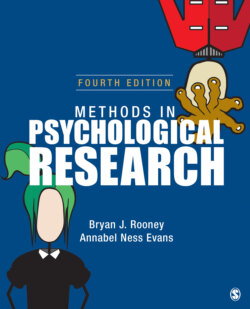Читать книгу Methods in Psychological Research - Annabel Ness Evans - Страница 81
На сайте Литреса книга снята с продажи.
The Results
ОглавлениеThe results section is the part of the article that is the most exciting. This is where we learn whether or not the data support the research hypothesis. Typically, the section begins with a general statement addressing that very point (i.e., did the data support or fail to support the researcher’s hypothesis?). As with the other sections, more detail on writing an article is presented in Chapter 14.
The results section is the most important section of a research article. Unfortunately, students can become overwhelmed by all the statistics. Even students who have done very well in their statistics courses can find the results sections of most research articles impossible to understand. The problem is that basic statistics courses cover basic statistics such as measures of central tendency (the mean, median, and mode) and measures of variability (the range, variance, and standard deviation). Of course, these statistics will appear in the results section and are widely used for describing and summarizing the data.
The problem is often in the tests of significance. Your basic statistics course probably covered the z test, t test, analysis of variance (ANOVA), and associated F test. You may have also learned about correlation and simple regression and, perhaps, chi-square tests. These are good statistics and are used sometimes in research, but, unfortunately, when you go to read the literature, you will find statistical tests that you may have never heard of. We do not intend to teach advanced statistics here, but we do want to provide you with a conceptual understanding of these statistics, so that when you read the literature, you will have at least a basic grasp of these procedures. So, as briefly as we can, we are going to review statistics. No, you do not need a calculator; this review is at a conceptual level only, but in Chapter 13, we provide you with more of the nitty-gritty of basic statistics, which you may need to do a research project of your own.
In research, statistics are used for two purposes. The first is to summarize all the data and to make it simpler to talk about the outcome of research. These are typically called descriptive statistics. The second purpose is to test research hypotheses, and these are called inferential statistics.
